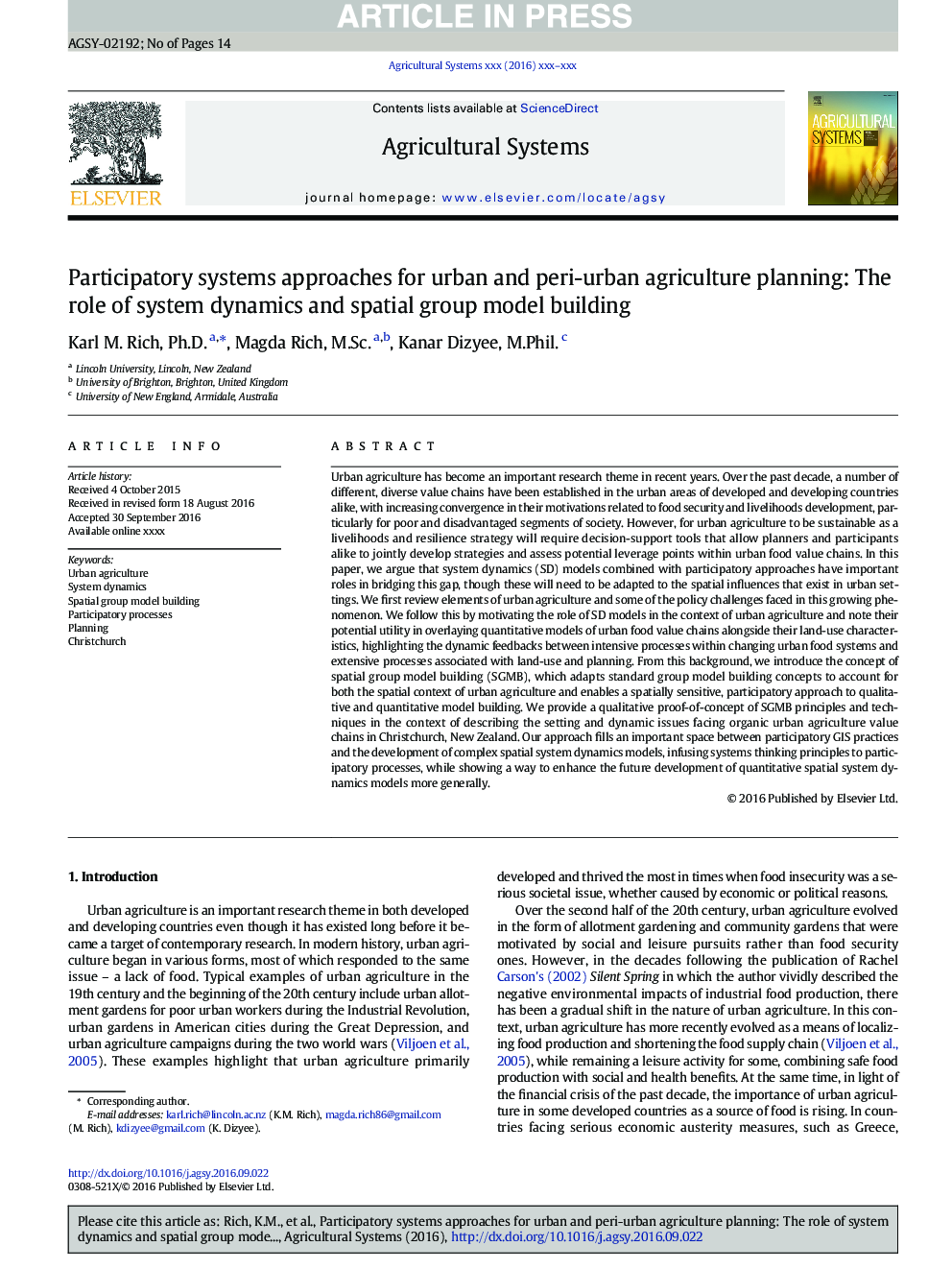| Article ID | Journal | Published Year | Pages | File Type |
|---|---|---|---|---|
| 8875063 | Agricultural Systems | 2018 | 14 Pages |
Abstract
Urban agriculture has become an important research theme in recent years. Over the past decade, a number of different, diverse value chains have been established in the urban areas of developed and developing countries alike, with increasing convergence in their motivations related to food security and livelihoods development, particularly for poor and disadvantaged segments of society. However, for urban agriculture to be sustainable as a livelihoods and resilience strategy will require decision-support tools that allow planners and participants alike to jointly develop strategies and assess potential leverage points within urban food value chains. In this paper, we argue that system dynamics (SD) models combined with participatory approaches have important roles in bridging this gap, though these will need to be adapted to the spatial influences that exist in urban settings. We first review elements of urban agriculture and some of the policy challenges faced in this growing phenomenon. We follow this by motivating the role of SD models in the context of urban agriculture and note their potential utility in overlaying quantitative models of urban food value chains alongside their land-use characteristics, highlighting the dynamic feedbacks between intensive processes within changing urban food systems and extensive processes associated with land-use and planning. From this background, we introduce the concept of spatial group model building (SGMB), which adapts standard group model building concepts to account for both the spatial context of urban agriculture and enables a spatially sensitive, participatory approach to qualitative and quantitative model building. We provide a qualitative proof-of-concept of SGMB principles and techniques in the context of describing the setting and dynamic issues facing organic urban agriculture value chains in Christchurch, New Zealand. Our approach fills an important space between participatory GIS practices and the development of complex spatial system dynamics models, infusing systems thinking principles to participatory processes, while showing a way to enhance the future development of quantitative spatial system dynamics models more generally.
Related Topics
Life Sciences
Agricultural and Biological Sciences
Agricultural and Biological Sciences (General)
Authors
Karl M. Ph.D., Magda M.Sc., Kanar M.Phil.,
